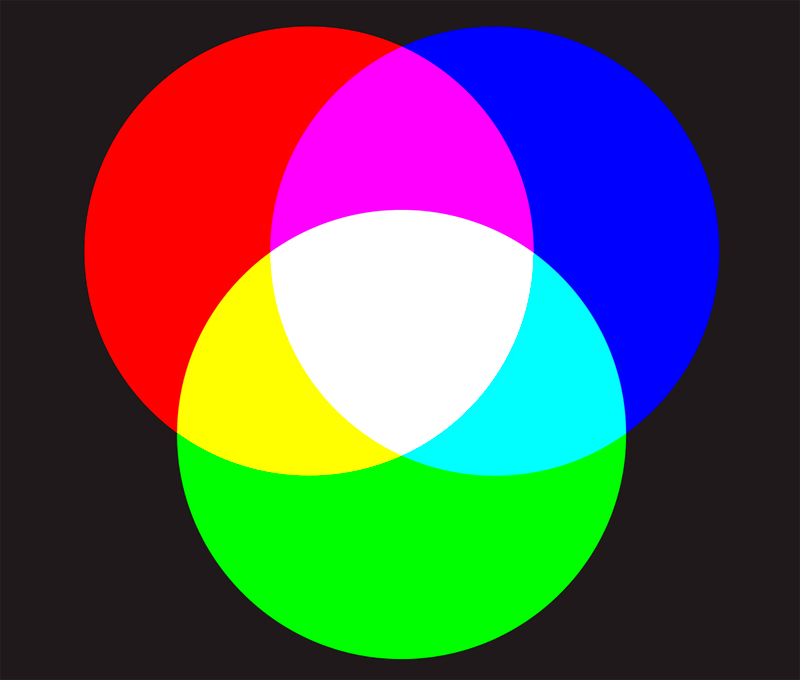Additive Mixture
加法混色
Kahoukonshoku
CATEGORIES
Additive mixture or additive color mixture is the phenomenon in which brightness is increased with the mix of light source colors.
Color can be divided into light source color, which is the color of the light itself, and object color, which is the color produced when light hits an object and is reflected, absorbed or transmitted. Light source color refers to colored light emitted by the sun or a computer screen and all colors can be represented by the mixing ratio of the three primary colors of light: red, green and blue. The brightness of a mixed colored light is simply the sum of the brightness of its component colors. Therefore, mixing the three primary colors increases the lightness, and when mixed in equal amounts, they produce a white light (achromatic color). Hues also change as seen in the fact that when red and green overlap, they produce yellow. As a special case, there is a phenomenon in which additive color mixing effects are produced by placing specific colors next to each other (visual mixing). This phenomenon is seen in paintings that are drawn in dots.
The opposite of additive color mixture is subtractive color mixture, which results in reduced lightness.

